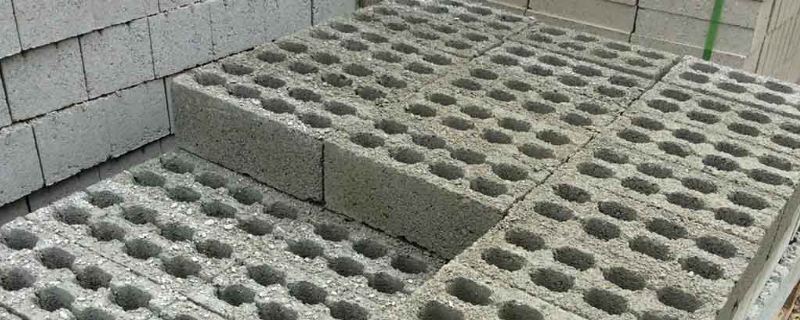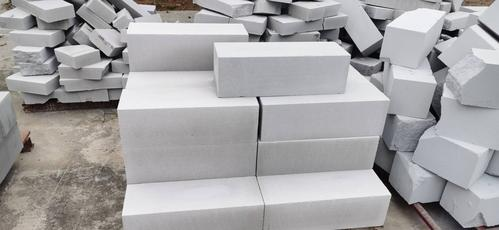The following is a summary of the differences, manufacturing processes, application scenarios, advantages and disadvantages of sintered bricks, cement block bricks (concrete blocks) and foam bricks (usually referring to aerated concrete blocks or foam concrete blocks), which is convenient for reasonable selection in construction projects:
I. Core Difference Comparison
| Project | Sintered Brick | Cement Block Brick (Concrete Block) | Foam Brick (Aerated / Foam Concrete Block) |
|---|---|---|---|
| Main Materials | Clay, shale, fly ash, etc. (requiring firing) | Cement, sand and gravel, aggregate (crushed stone / slag, etc.) | Cement, fly ash, foaming agent (such as aluminum powder), water |
| Finished Product Characteristics | Dense, large self-weight, high strength | Hollow or solid, medium to high strength | Porous and lightweight, low density (about 300-800kg/m³), good thermal insulation and sound insulation |
| Typical Specifications | Standard brick: 240×115×53mm (solid) | Common: 390×190×190mm (mostly hollow) | Common: 600×200×200mm (hollow, porous structure) |
II. Differences in Manufacturing Processes
1.Sintered Bricks
●Process:
Raw material screening → Raw material crushing → Mixing and stirring →坯体成型 → Drying → High-temperature sintering (800-1050℃) → Cooling.
●Key Process:
Through firing, physical and chemical changes (melting, crystallization) occur in the clay to form a high-strength dense structure.
●Characteristics:
Clay resources are abundant. The utilization of waste such as coal mine slag and ore dressing tailings can reduce pollution. It can be industrialized for mass production. The finished bricks have high strength, good stability and durability.

2.Cement Block Bricks (Concrete Blocks)
●Process:
Cement + Sand and gravel aggregate + Water mixing and stirring → Molding by vibration / pressing in the mold → Natural curing or steam curing (7-28 days).
●Key Process:
Through the hydration reaction of cement, solid blocks (load-bearing) or hollow blocks (non-load-bearing) can be produced. Some lightweight aggregates (such as slag, ceramsite) are added to reduce the self-weight.
●Characteristics:
The process is simple and the cycle is short. It can be produced on a large scale, and the strength can be adjusted (controlled by the mixture ratio). However, the self-weight is greater than that of foam bricks. The cost of finished bricks is high and the output is limited, which is suitable for small-scale production.
3.Foam Bricks (Aerated / Foam Concrete Blocks)
●Process:
Raw materials (cement, fly ash, sand) + Foaming agent (hydrogen is generated when aluminum powder reacts with water to foam) mixing → Pouring and foaming → Static setting and curing → Cutting and forming → Autoclave curing (180-200℃, 8-12 hours).
●Key Process:
The foaming agent is used to form uniform pores, and a porous crystal structure (such as tobermorite) is generated through autoclave curing, which is lightweight and has thermal insulation properties.
●Characteristics:
The degree of automation is high and energy-saving (the energy consumption of autoclave curing is lower than that of sintering), but the requirements for the raw material ratio and foaming control are high. The compressive strength is low and it is not resistant to freezing. It can only be used in frame structure buildings and filling walls.
III. Application Differences in Construction Projects
1.Sintered Bricks
●Applicable Scenarios:
Load-bearing walls of low-rise buildings (such as residential buildings below six floors), enclosure walls, buildings with a retro style (using the appearance of red bricks).
Parts requiring high durability (such as foundations, outdoor ground paving).
●Advantages:
High strength (MU10-MU30), good weather resistance and frost resistance, long service life.
The traditional process is mature and has strong adaptability (good adhesion with mortar).
●Disadvantages:
It uses clay resources and the firing process causes a certain degree of pollution (nowadays, fly ash / shale sintered bricks are mostly promoted to replace clay bricks).
Large self-weight (about 1800kg/m³), increasing the structural load.
2.Cement Block Bricks
●Applicable Scenarios:
Load-bearing blocks (solid / porous): Filling walls of frame structures, load-bearing walls of low-rise buildings (strength grade MU5-MU20).
Non-load-bearing hollow blocks: Interior partition walls of high-rise buildings (to reduce self-weight).
●Advantages:
The single-machine output is low and the cost is slightly high.
The strength can be adjusted, the raw materials are easily available, and the production is convenient (the block is large, and the masonry efficiency is high).
Good durability, can be used in wet environments (such as toilets, foundation walls).
●Disadvantages:
Large self-weight (about 1800kg/m³ for solid blocks, about 1200kg/m³ for hollow blocks), general thermal insulation performance (thickening or adding an additional thermal insulation layer is required).
High water absorption, it is necessary to water and moisten it before masonry to avoid the loss of water in the mortar.
3.Foam Bricks (Aerated / Foam Concrete Blocks)
●Applicable Scenarios:
Non-load-bearing walls: Interior and exterior partition walls of high-rise buildings (such as filling walls of frame structures), buildings with high energy-saving requirements (thermal insulation is required).
Not suitable for: Foundations, wet environments (such as toilets, basements), load-bearing structures.
●Advantages:
Lightweight (the density is only 1/4 to 1/3 of that of sintered bricks), greatly reducing the structural load and saving the amount of reinforced concrete.
Good thermal insulation and sound insulation (the thermal conductivity is 0.1-0.2W/(m・K), which is 1/5 of that of sintered bricks), meeting the energy-saving standards.
Convenient construction: The block is large (the size is regular), it can be sawed and planed, the flatness of the wall is high, and the plastering layer is reduced.
●Disadvantages:
Low strength (the compressive strength is mostly A3.5-A5.0, only suitable for non-load-bearing parts), the surface is easy to be damaged, and collision should be avoided.
Strong water absorption (water absorption rate is 20%-30%), interface treatment is required; it is easy to soften in a wet environment, and a moisture-proof layer is required.
Weak adhesion with ordinary mortar, special adhesive or interface agent is required.
IV. How to Choose? Core Reference Factors
●Load-bearing Requirements:
Load-bearing walls: Give priority to sintered bricks (for small high-rise buildings) or high-strength cement blocks (MU10 and above).
Non-load-bearing walls: Choose foam bricks (giving priority to energy-saving) or hollow cement blocks (giving priority to cost).
●Thermal Insulation and Energy Conservation:
In cold regions or energy-saving buildings: Foam bricks (with built-in thermal insulation), no additional thermal insulation layer is required; in hot summer and cold winter regions, the selection can be combined with the climate.
●Environmental Conditions:
In wet areas (such as basements, kitchens and toilets): Only sintered bricks and cement blocks (waterproof treatment is required) can be used, and foam bricks (prone to damage due to water absorption) should be avoided.
For outdoor exposed parts: Give priority to sintered bricks (strong weather resistance) or cement blocks with surface treatment.
Summary
●Sintered bricks: Traditional high-strength bricks, suitable for low-rise load-bearing and retro buildings, with good stability and durability.
●Cement block bricks: Small investment, various product styles, suitable for various load-bearing / non-load-bearing walls. Due to the high price of cement, the cost is slightly high.
●Foam bricks: The first choice for lightweight and energy-saving, suitable for interior partition walls of high-rise buildings and scenarios with high thermal insulationrequirements, but attention should be paid to moisture-proofing and strength limitations.
According to the specific requirements of the project (load-bearing, energy-saving, environment, budget), they should be used reasonably in combination. For load-bearing, choose sintered bricks. For foundations, choose sintered bricks. For enclosure walls and residential buildings, choose sintered bricks and cement block bricks. For frame structures, choose lightweight foam bricks for partition walls and filling walls.
Post time: May-09-2025


